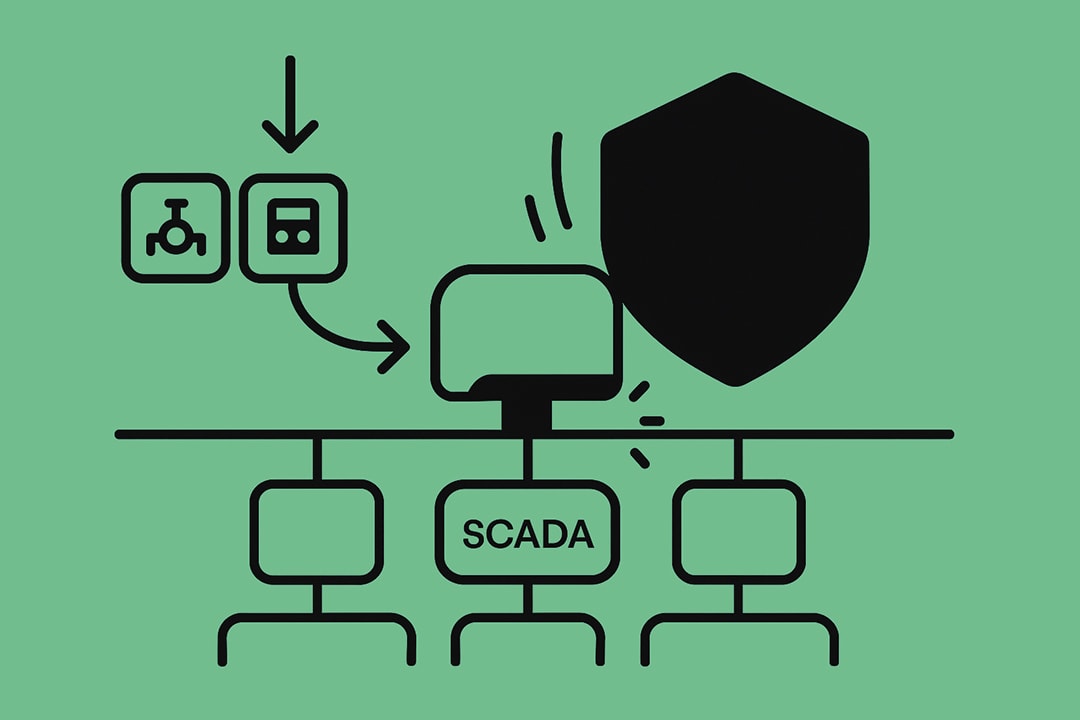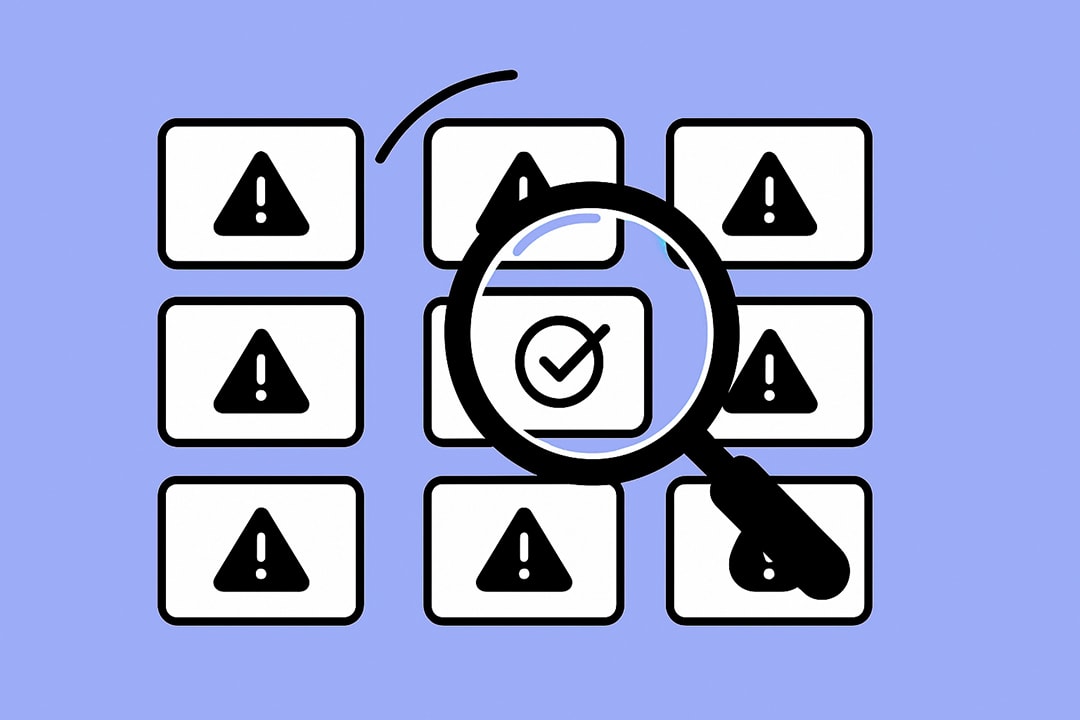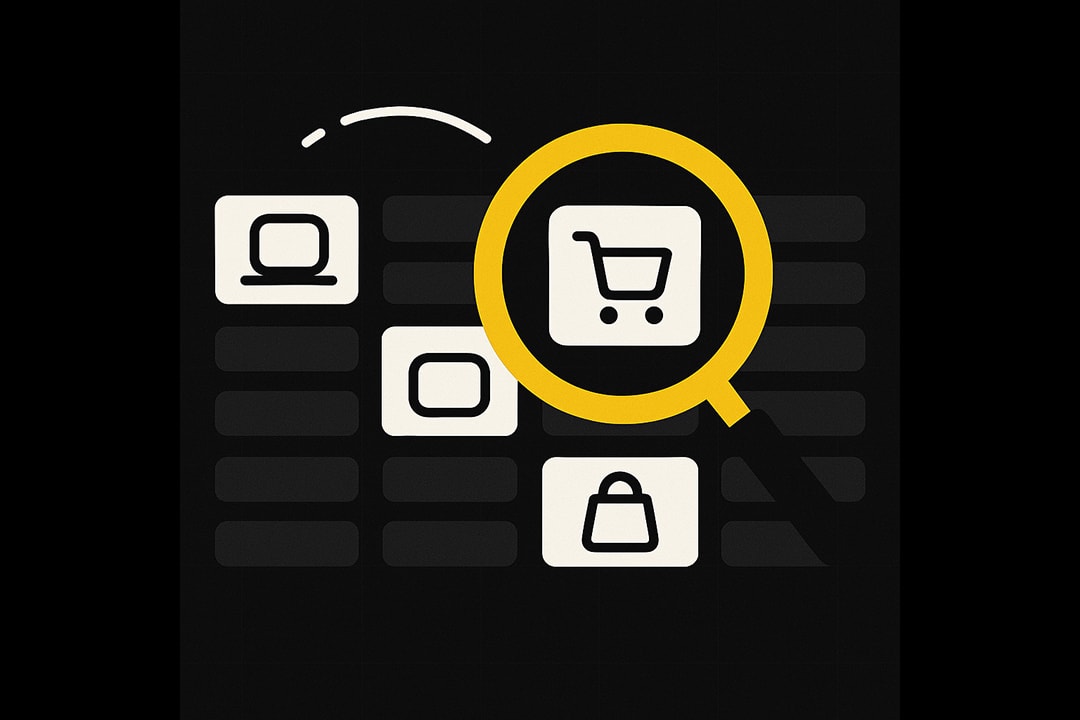ICS and SCADA security for IT leaders
A concise guide for IT leaders on ICS and SCADA security—covering key challenges, proven frameworks, and future-ready defense strategies.

The escalating threat landscape for ICS and SCADA
Why industrial control systems are now a prime target
It is no longer a secret that the industrial control world has become a playground for threat actors who once ignored it. As more factories, utilities, and critical infrastructure run on connected PLCs and SCADA systems, the old assumption that “air-gapping is enough” is a punchline, not a strategy.
The attack surface has expanded, and adversaries have noticed. The convergence of IT and OT, the rise of remote access, and the persistence of legacy technology have created a new set of vulnerabilities, many of which are only now being fully understood.
Among the most urgent signals, CISA advisories in 2024 flagged a string of critical vulnerabilities across major ICS vendors. Siemens, Schneider Electric, and Rockwell faced multiple CVEs allowing remote code execution without authentication. These are not theoretical.
They are publicly documented, actively reported flaws that could let a remote adversary seize operational control with little more than an internet connection and patience. The days of “security through obscurity” are over, and the adversaries are not waiting for procurement cycles to catch up.
How the threats are changing and why detection is harder than ever
The numbers tell their own story. Dragos reported an 87% year-over-year increase in ransomware incidents targeting OT in 2023, with manufacturing bearing the brunt—71% of all industrial ransomware attacks landed in this sector. SANS data shows 83% of OT leaders experienced at least one security breach in the last year, the highest on record.
Yet, only 34% of organizations are confident they can detect malicious activity on their OT networks in real time. The gap between breach and detection, often called dwell time, remains a serious concern. Mandiant’s latest findings show that even as median global dwell time has improved (now 10 days for all sectors, 5 days for ransomware incidents), attackers are still present long enough to inflict real damage, especially in environments where downtime is measured in lost revenue or, worse, public safety.
What is driving this surge? The answer is not just technical. The ransomware-as-a-service economy is thriving, and OT is the new gold rush. Groups like Black Basta have hit over 500 organizations across critical infrastructure, moving through weak segmentation and flat networks with alarming speed.
But it is not just ransomware. State-sponsored advanced persistent threats (APTs) are probing for soft spots, quietly mapping out pathways that could be leveraged for sabotage, extortion, or geopolitical leverage.
Why legacy systems and patch paralysis make everything worse
One of the most persistent pain points is the patching paradox. ICS and SCADA platforms are notorious for their long life cycles, vendor dependencies, and the operational risk associated with downtime. As a result, patch management is often slow, sometimes measured in quarters, not days. This lag is not just an inconvenience. It is a tactical advantage for attackers.
According to recent Ponemon data, OT security budgets have grown—now accounting for over 20% of security spend in industrial sectors—but money alone does not solve the operational realities. Many environments are still running with flat networks, minimal segmentation, and incomplete asset inventories. The result is a perfect storm: a highly visible, widely known set of vulnerabilities, slow remediation, and adversaries with both the means and motivation to exploit them.
The stakes for IT and OT leaders
This is where leadership becomes more than a job title. IT and OT leaders are facing a fundamental tension: the need to keep systems available and safe, while also responding to a threat landscape that punishes complacency and rewards speed. The stakes are not abstract. They are measured in lost production, regulatory scrutiny, and, in some cases, public safety.
The reality is harsh, but not hopeless. Understanding the evolving threat landscape is the first step toward building a defense that works in practice, not just on paper.
Why complexity and legacy systems create persistent headaches
For leaders tasked with securing industrial control environments, complexity is not just a technical descriptor—it is a daily obstacle. Most ICS and SCADA deployments were never designed with cybersecurity in mind. They are mosaics of decades-old PLCs, patched-together vendor solutions, and operational processes that reward uptime over everything else.
In practice, this means unpatched Windows XP boxes running critical processes, hardcoded credentials that are older than some staff, and proprietary protocols that resist standard IT defenses.
The pressure to keep production running 24/7 often translates to a “do not touch” mentality, where even basic security hygiene becomes a negotiation with operations. The result is a breeding ground for vulnerabilities that are well-known to attackers and difficult to remediate for defenders.
How patch management paralysis and downtime risk compete
The patching paradox is a daily reality for OT leaders. Applying security updates to ICS platforms is not just a technical task. It is a risk calculation with high stakes. Downtime for maintenance can translate directly to lost revenue, safety incidents, or regulatory violations.
According to Ponemon’s latest findings, OT security budgets are growing, but the operational window for patching remains painfully narrow. In many environments, patch cycles are planned around annual shutdowns, not urgent advisories. This creates a window of exposure that is measured in months, not days, and adversaries are well aware of it.
The net result is a backlog of critical vulnerabilities that remain open, even as CISA and vendors issue urgent advisories.
Why flat networks and poor asset visibility invite trouble
One of the most overlooked but damaging challenges is network architecture. Many industrial environments still operate with flat or only partially segmented networks, a relic of the era when isolation was assumed to be enough. As IT and OT converge, these flat networks provide attackers with an express lane from initial compromise to critical assets.
Palo Alto Networks’ recent research reveals that asset visibility is still lacking in a majority of industrial organizations. Without a current, comprehensive inventory, security teams are often flying blind. This makes it incredibly difficult to enforce segmentation, monitor for anomalies, or even know what needs to be patched in the first place.
How the ransomware economy and advanced threats shift the game
The motivations of attackers have evolved, and so have their tactics. The ransomware economy has turned ICS networks into high-value targets. Groups like Black Basta and others are not just locking up files; they are threatening to disrupt operations, exfiltrate sensitive process data, and publicly expose victims. The threat is not limited to criminals.
Nation-state actors are probing for weaknesses in critical infrastructure, looking for leverage points in everything from power grids to water utilities. These adversaries are patient, well-resourced, and capable of exploiting the smallest misconfiguration or outdated device. SANS data shows that only one in three organizations can detect malicious activity in real time—a sobering statistic given the dwell times observed in recent attacks.
Why organizational culture and silos make security even harder
Technical challenges are only half the battle. The cultural divide between IT and OT teams is a persistent barrier. Security initiatives often get lost in translation between risk-averse engineers and compliance-driven infosec leaders. Priorities do not always align: operations want maximum uptime, security wants minimum exposure.
This tension is not just frustrating; it is operationally significant. It delays decision-making, complicates incident response, and sometimes results in “security theater”—controls that look good on paper but do little to stop real threats. Bridging this gap requires more than policy; it demands trust, shared language, and leadership willing to negotiate the gray area between risk and reward.
The internal tension every leader faces
For IT and OT leaders, these challenges are more than tactical issues; they are sources of real professional strain. Every decision is a trade-off between operational reliability and risk reduction. Every incident is a test of both technical and political acumen. The stakes are high, the pressure is persistent, and the margin for error is razor-thin.
The reality is that no one gets congratulated for preventing the breach that does not happen, but everyone remembers the downtime that did. Leading in this environment means navigating not just the technical but the human factors that shape outcomes every day.
Why a framework Is essential when the stakes are high
In industrial control environments, security is too often a patchwork of ad hoc fixes, legacy habits, and “hope for the best” attitudes. That approach no longer works. As attack sophistication rises and regulatory pressure tightens, organizations need a strategic framework—a living, operationalized playbook for defending ICS and SCADA systems.
Standards like NIST SP 800-82 and ISA/IEC 62443 do more than check compliance boxes; they give leaders a foundation for building resilience into every layer of their operational technology.
How regulatory guidance sets the baseline—but not the finish line
Government and industry bodies have responded to the surge in ICS vulnerabilities with clear, actionable directives. CISA’s advisories in 2024 are not suggestions. They urge immediate patching for critical CVEs, especially those enabling unauthenticated remote access, and mandate segmentation of OT from IT networks.
The updated NIST SP 800-82 framework expands its reach to all operational technology and places new weight on zero trust architectures, continuous asset monitoring, and robust incident response. ISA/IEC 62443, increasingly adopted across industrial sectors, formalizes the principle that security must be engineered into the system lifecycle, not bolted on after deployment.
But frameworks are only as good as their execution. The organizations that fare best are those that treat regulatory guidance as a starting point, layering additional controls and tailoring best practices to the realities of their specific operations.
How to move from policy to practice in OT security
Asset inventory and visibility
You cannot defend what you do not know exists. The first pillar of any effective OT security program is a real-time, continuously updated asset inventory. This is not a one-off spreadsheet exercise; it is an ongoing discipline.
Modern asset discovery tools can scan for both managed and rogue devices, cataloging hardware, firmware versions, and communication protocols. Visibility creates the foundation for every other control—from patch management to network segmentation.
Network segmentation and micro-segmentation
Flat networks are an attacker’s dream. Segmentation transforms the landscape, turning a single compromise into a contained event rather than a systemic crisis. The baseline: physically and logically separate IT from OT, with tightly controlled conduits for only the most necessary data flows.
Micro-segmentation within OT—dividing production, safety, and administrative zones—adds another layer. Implement firewall rules, VLANs, and unidirectional gateways where possible. Segmentation is not a silver bullet, but it is the best way to slow adversaries and limit blast radius.
Patch management with uptime in mind
Patching in OT is a balancing act, not a checkbox. The best-run organizations prioritize vulnerabilities using risk-based frameworks, focusing on those flagged in the CISA Known Exploited Vulnerabilities Catalog and active vendor advisories.
When patching is not immediately possible, compensating controls—such as enhanced monitoring, temporary isolation, or disabling unnecessary services—must be documented and enforced. Tabletop exercises with operations teams can help identify the least disruptive patch windows and build trust across silos.
Continuous monitoring and anomaly detection
Traditional IT monitoring tools rarely work in OT. Leaders must deploy OT-aware intrusion detection and continuous monitoring platforms that understand industrial protocols and operational context.
These systems provide early warning for both known threats and suspicious anomalies—a critical advantage given the dwell times observed in recent attacks. Integrating these tools with incident response playbooks ensures that detection is actionable, not just another alert in the noise.
Incident response and recovery
Incident response in OT is not just about technical containment; it is about operational continuity. The most mature organizations run regular tabletop exercises that simulate ransomware, supply chain compromise, and process disruption.
Response plans should be tailored to the realities of the plant floor, with clear roles for IT, OT, legal, and executive leadership. Backups must be tested, not just scheduled, and recovery procedures rehearsed until they are second nature.
Why collaboration is the hidden control
The final, often overlooked, best practice is building a security culture that bridges IT and OT. Cross-functional teams, shared metrics, and joint decision-making transform security from a compliance checkbox to a daily operational mindset.
Procurement should require vendors to meet security standards, and lifecycle management should include regular reviews of both systems and processes. The organizations that succeed are not those with the biggest budgets, but those that can align people, process, and technology around a clear, shared vision of resilience.
FAQ
1. What are the biggest cybersecurity threats facing ICS and SCADA systems in 2024?
The most significant threats to ICS and SCADA systems include ransomware attacks, exploitation of unpatched vulnerabilities in PLCs and HMIs, supply chain breaches, and targeted campaigns by advanced persistent threat (APT) groups. Attackers increasingly take advantage of legacy systems, flat networks, and weak remote access controls.
2. Why is patch management so challenging in OT and industrial environments?
Patching is difficult because many ICS and SCADA systems require high availability and cannot tolerate downtime. Legacy devices may lack vendor support or have custom configurations, making updates risky or operationally disruptive. Security teams must balance the need for rapid patching with the realities of production schedules and system reliability.
3. How can organizations improve asset visibility and network segmentation in OT environments?
Organizations can deploy specialized OT asset discovery tools to maintain an up-to-date inventory of all devices and software. Implementing robust network segmentation—separating IT from OT and isolating critical assets within OT—reduces the risk of lateral movement and helps contain breaches.
4. What frameworks and standards should IT leaders follow for ICS and SCADA security?
Key frameworks include NIST SP 800-82 (for industrial control system security), ISA/IEC 62443 (for lifecycle OT security), and guidance from CISA. These frameworks recommend asset inventory, segmentation, continuous monitoring, and robust incident response planning.
5. How is AI shaping the future of ICS and SCADA cybersecurity?
AI and machine learning are transforming OT security by enabling real-time anomaly detection, automated incident response, and predictive risk analysis. These technologies help IT and OT teams detect subtle threats faster and respond more effectively, especially as adversaries adopt increasingly sophisticated attack methods.





